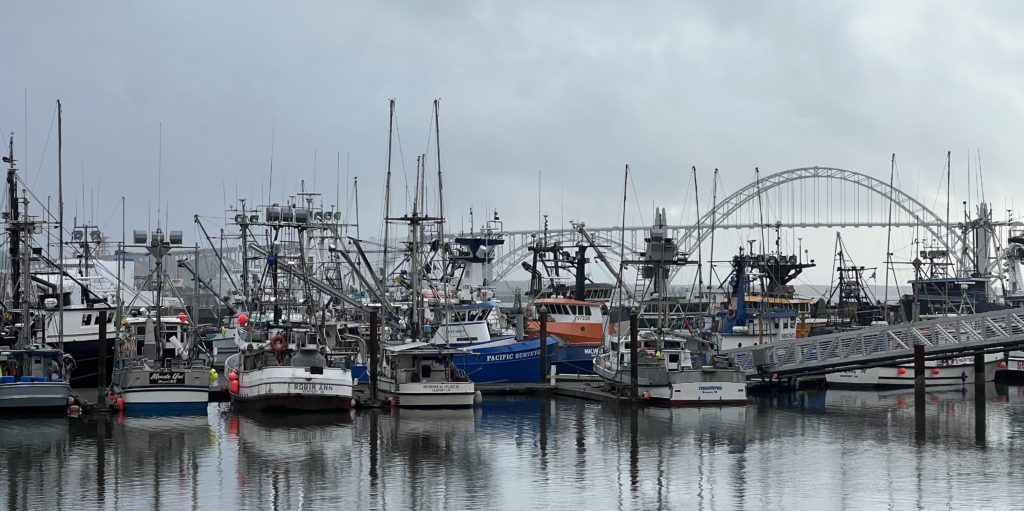
By DANA TIMS/YachatsNews.com
A year ago, Taunette Dixon, along with the rest of Oregon’s $60 million commercial Dungeness crabbing industry, was dining on a diet of decidedly good news.
Negotiated prices between boat owners and processors opened about $2 per pound higher than most years, all but guaranteeing profits in the lucrative first two months of a normal year.
Even better, pre-season testing of crabs for meat levels and a type of naturally occurring acid that had delayed the opening of each of the past seven years gave the rare green light to actually start fishing on the season’s Dec. 1 start date.
Toss in a spate of near-perfect weather and things couldn’t have looked much better.
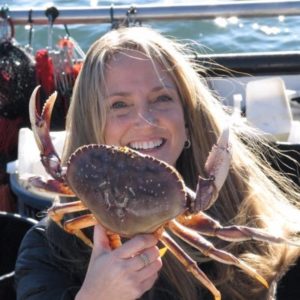
“We were staring at what was shaping up to be a very good season,” said Dixon, who owns the 60-foot-long F/V Tauny-Ann crabbing and fishing boat. “Not a complaint in sight.”
In fact, the 2021-22 Dungeness season produced a record high of more than $91.5 million ex-vessel value, which is the value of the crabs at the point they are unloaded from the vessel and sold to waiting processors.
And as this year’s season opening approaches? What a difference a year can make.
Crabbers and processors have not agreed on a price yet, and o ther factors aren’t looking good to replicate last year’s mini-gold mine. Weather forecasts are, at best, mixed. And the pre-season tests that green-lighted the Dec. 1 a year ago opening have already returned enough negative results to delay this year’s season to Dec. 16 or later.
“It all underscores what we have to remind ourselves of every year,” said Dixon, who comes from a four-generation family of commercial fishermen. “This is one very tough business.”
Still, more than 300 commercial boats up and down the Oregon coast are making final preparations to jump back into a fishery that is by far the most lucrative in the state.
Dungeness crab landings have long helped form the backbone of economic, social and culinary life on the coast.
Landings from the ocean and Columbia River have averaged more than 18 million pounds per season over the past two decades with an average ex-vessel value of nearly $50 million. The 2004-05 season still holds the all-time-high of over 33.5 million pounds, with six of the past seven seasons nonetheless exceeding 10 million pounds.
“Without a doubt,” said Mitch Vance, shellfish project leader in the Oregon Department of Fish and Wildlife’s Newport office, “Dungeness crab is by far the state’s most valuable single-species fishery.”
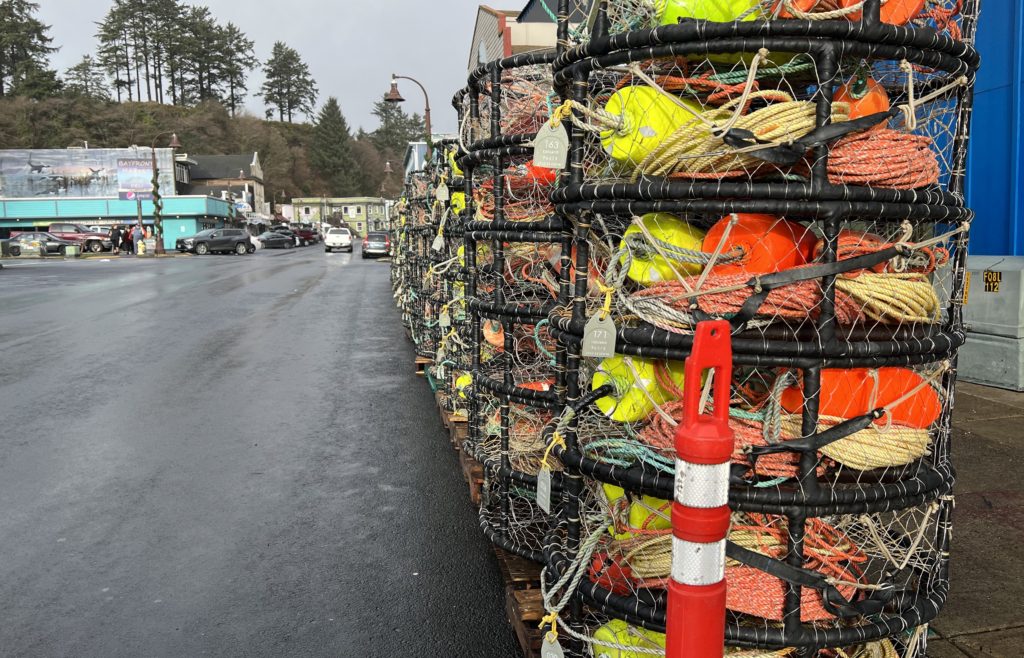
Feeling crabby in Newport
Ask Paula Miranda, general manager of the Port of Newport, about the economic impact that Dungeness crab have on the area and she immediately reaches for a 2019 report that contains multiple indicators that make the case.
“The largest fleet in the state homeports right here,” she said. “Obviously, it’s a very big deal.”
Of the 331 commercial fishing vessels that made deliveries that year to docks at Newport and Depoe Bay, 264 listed the Port of Newport as their home, according to the report. Nearly half of the $60 million netted by those deliveries came from crab.
As significantly, more than 20 percent of the total $155 million in ocean and on-shore based economic contributions to the area in 2019 came directly from the Dungeness crab harvest.
“That’s a huge chunk of revenue that benefits not only Newport and Lincoln County, but the entire state,” Miranda said.

Passing the tests
Of the several big obstacles that must be cleared before any commercial crabbing season can begin, none are perhaps bigger than pre-season tests for both the percentage of meat in crabs caught and tested in designated zones along the coast, and for domoic acid, a natural toxin associated with harmful algal bloom events that can accumulate in certain shellfish and fish species and potentially cause serious illness in consumers.
The first round of pre-season testing was completed under state supervision in mid-November, when licensed commercial vessels agreeing to take part in the testing launched from various Oregon ports.
Initial findings showed that the meat “pick-out” percentage off the central coast was sufficiently high – above an average of about 24 percent – to gain a passing grade. Those areas also showed below-threshold levels of domoic acid in razor clams, which are used as an indicator species to measure the toxin.
Areas both north and south, however, came in below the pick-out percentage and above domoic acid levels needed to open on time. Additional tests in early December will retest for both levels.
Next steps also involve talking with fisheries-management experts in California and Washington, said Kelly Corbett, who helps oversee the testing for the Oregon Department of Fish and Wildlife.
“Last year, generally speaking, we had an excellent year for crab,” she said. “But each season, we get fluctuations, due mainly to patterns in relation to ocean conditions. This year appears to be no exception.”
Another reason why coast-wide testing is needed – it is overseen by the aptly named Tri-State Dungeness Crab Committee – is because crab are highly mobile and can move surprisingly quickly from one area to another.
“The one thing Dungeness crab continue to do,” ODFW’s Vance quipped, “is ignore our state lines.”
Challenges on the horizon
Under existing rules regulating commercial crab harvests, it remains possible for one area to open even if portions off other coasts remain closed due to inadequate pre-season test results.

But doing so only presents industry participants with yet one more needle they need to thread to be successful, said Tim Novotny, communications director with the Oregon Dungeness Crab Commission.
If a boat captain chooses to make a run for one of the areas selected to open, he or she then has to forego the opportunity for at least 30 days to hop out of that zone and seek out another, perhaps more lucrative spot, he said.
“That means that if, all of a sudden, crab are north and south, you’re out of luck,” Novotny said. “You’re locked into that middle section for at least a month.”
And just because pre-season testing has been cleared there, he added, doesn’t mean tons of crab are necessarily crawling around on the soft, sandy ocean bottoms they prefer.
“There’s a lot that needs to be taken into consideration,” he said. “A season can be made or broken in a very short amount of time.”
Statistics from years past shows that the bulk of a year’s harvest is usually pulled up in the first eight weeks of any particular season. That was certainly true last year, when more than 12 million pounds of the season’s total yield of 17 million pounds was landed in the opening two months of a season that runs through August.
Also unknown this year is whether the fleet and crab processors will ask the Oregon Department of Agriculture to oversee negotiations over prices. Polling is now ongoing by the department to determine if the legally required 51 percent of each group wants state assistance with negotiations.
“It’s entirely up to the industry,” said Casey Prentiss, the department’s market access and certification assistant program area director. “Some years they want that help and other years they don’t.”
Some spendy crab cakes
Headaches from decisions about crab aren’t all suffered out on the ocean.
Restaurants hoping to keep the iconic species on their menus have had an extremely tough last couple of years, wrestling first with Covid-related mandatory restaurant shutdowns, and then the subsequent supply-chain issues that drove all prices higher than they’d been in sometime.

At Ona Restaurant in Yachats, owner Michelle Korgan finally had to give crab the boot entirely when wholesale prices more than doubled during the pandemic.
“Prices got up to almost $65 a pound for cracked crab,” she said. “It was wild. You can’t make a dime on that.”
The cost has now come down by about one-third, Korgan said, but that still forces her to charge far more for the coastal delicacy than she’d like.
“Charging $21 for a crab cake would have at one time seemed something not even approachable,” she said. “Unfortunately, now it’s the norm. But you know what? They aren’t going out the door as fast as they used to, but people are still buying them.”
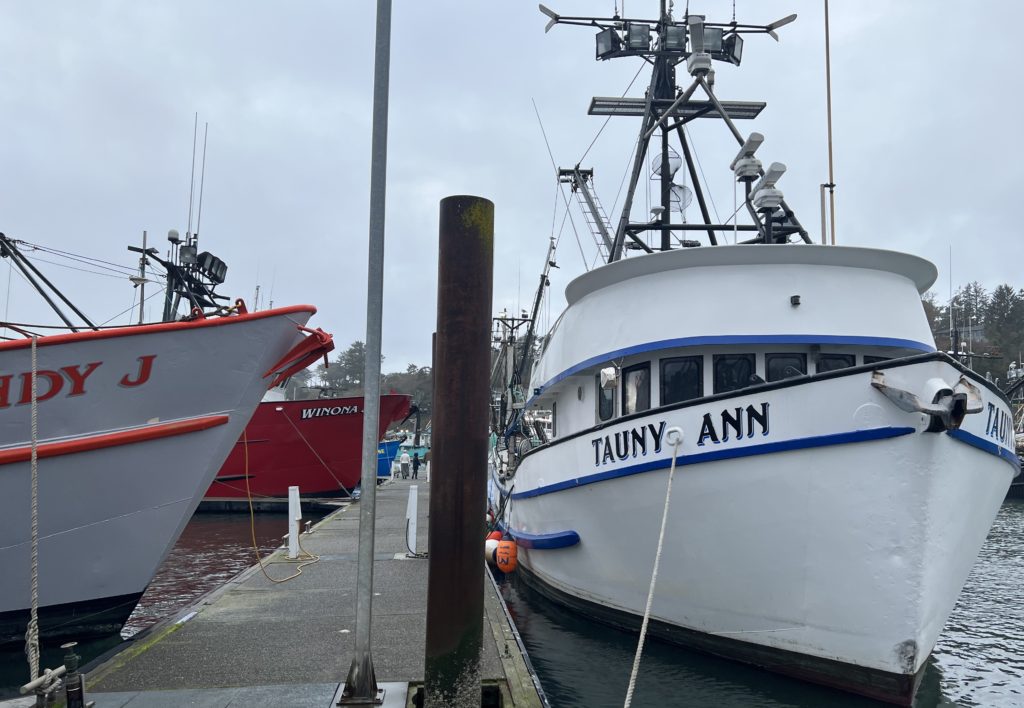
A captain’s story
Ki Rozewski is one of dozens of boat captains making final preparations for the 2022-2023 Dungeness season. He and his two-person crew – which once in a while consists of his 10-year-old son, Boden — have their 300 pots cleaned, stacked and ready to go.
In his earlier years, when he was running larger fishing boats out of Alaskan ports, he felt tremendous pressure at this time of year to provide the amount of quick-hit revenue he knew owners were looking for.
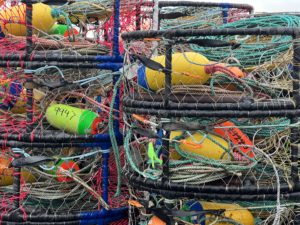
Now, captaining Dixon’s F/V Tauny-Ann, his approach has changed completely.
“I just make sure I’m 100 percent ready to go,” Rozewski, 41, said. “Now, it is what it is and I just can’t get worked up like that. I expect the worst at all times. If anything goes well, that’s something to get excited about.”
When the season-opening gun sounds, he and myriad others will be looking at long hours spent in challenging, difficult conditions. It takes anywhere from nine to 16 hours, for instance, just to set and retrieve his gear. He will likely do that twice before returning to port to sell his crab to waiting processors.
And yet, he said, this is a profession he wouldn’t trade for anything.
“This was my first job when I got out of high school and I’ve never wanted to do anything else,” the Toledo High School graduate said. “It’s all about preparation, because I can’t afford to gamble when it’s 50 percent of my income for the rest of the year.”
But he knows both the stakes and what it will take to make this season a successful one.
“It’s whoever can run the fastest gear and move them around and be ahead of the game,” Rozewski said. “As soon as I know the season is opening, I’m going fishing.”
- Dana Tims is an Oregon freelance writer who contributes regularly to YachatsNews.com. He can be reached at DanaTims24@gmail.com



